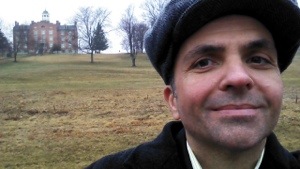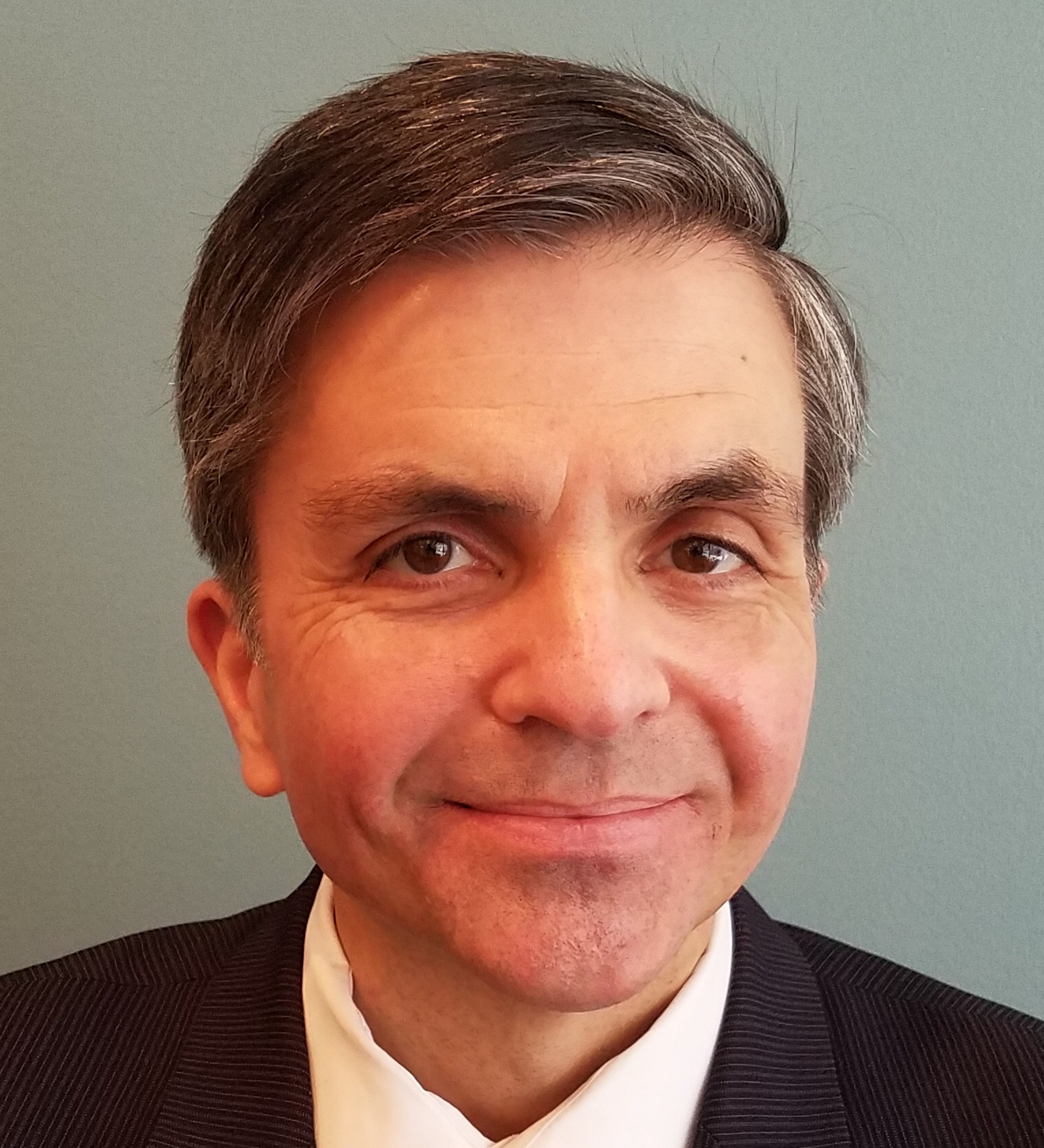On Wednesday I visited the campus of Gettysburg Lutheran Seminary, one of eight official seminaries of the Evangelical Lutheran Church in America and the oldest Lutheran seminary in America, started in 1826. The original campus building, built in 1832, is a famous landmark for the 1863 battle whose first day raged around the school. Last year it opened as a museum focusing on its use as a battlefield hospital, caring for 600 wounded soldiers, and the role of religion and slavery in the Civil War.
The photo above shows me on the campus lawn not far from where Matthew Brady snapped his famous photo below of the seminary shortly after the battle while wounded soldiers still recovered inside.
This building is named for its longtime founding president the Rev. Samuel Simon Schmucker, outspokenly anti-slavery even though his wife inherited slaves. The seminary educated a distinguished free black from South Carolina, Daniel Payne, who later became a bishop in the African Methodist Episcopal Church and the first black college president at what became Wilberforce University. Schmucker quit Gettysburg before the battle to evade possible capture by Confederate troops. His house, which still stands on the campus with a visible cannon projectile in the wall, was also used as a hospital. Besides his anti-slavery views, which included help for escaping slaves, Schmucker was controversial among Lutherans for his Calvinist inclinations and desire to minimize Lutheran distinctives.
Schmucker helped choose Gettysburg as the seminary’s location to prepare Lutherans to serve “at the crossroads of hope and history.” He likely never expected history to surge violently around the school as the largest battle ever in the Western Hemisphere. That battle was literally determined here as Union cavalry General John Buford decided to resist advancing Confederate forces approaching the seminary, from whose cupola he viewed the scene. When Union General John Reynolds approached, Buford shouted down his appropriately theological view of the situation: “The Devil’s to pay!”
Confederates later overran the seminary, after General Reynolds was killed, but the resistance there helped allow federals to coalesce south of Gettysburg, where they prevailed on the battle’s third day. Fifty years later the building housed aging Civil War veterans in town, 50,000 strong, to commemorate the battle’s anniversary and memorialize reconciliation between north and south. The stone house that General Lee used as headquarters stands nearby. Confederate troops ransacked Schmucker’s house reputedly because of his anti-slavery views. His barn was reputedly a stop on the Underground Railroad for escaped slaves. American Lutheranism formally schismed in 1863 over slavery, following Methodists, Baptists and Presbyterians, not reuniting for another century.
There are few places in America that more incarnate the Mainline Protestant role in shaping the American ethos than Gettysburg Theological Seminary. As the Mainline, now old line, continues to recede, including more recent schisms over theology and sex, what religious institutions will replace its once central place in guiding and challenging American culture?







Comment by Daniel on March 22, 2014 at 11:49 am
I would humbly nominate Concordia seminary in St. Louis. It is interesting to note that the “battle” for the soul of LCMS took place at Concordia in the 1970s. The result ensured that seminary education would remain orthodox and true to the creeds and Luther’s confession.
It is true that he who controls the seminaries has much control over the denominational direction of the denominations that use the graduates of these seminaries; e.g., TEC and UMC seminaries.
Comment by Xnihilo on March 22, 2014 at 1:43 pm
I didn’t know that there was a specifically Southern Lutheran church at any time. What was its name and into what current body did it eventually enfold?